A visual survey spanning two crucial decades for the Italian art scene takes shape in the exhibition 1950 - 1970. Two Decades of Art in Rome, promoted by Antonacci Lapiccirella Fine Art of Rome and Matteo Lampertico of Milan. The exhibition, from May 13 to June 13, 2025, is a timely reconnaissance of two decades of activity and experimentation in the capital, relating established protagonists and artistic practices that marked an entire generation. What emerges is a portrait of a city in ferment, capable of serving as a crossroads of international trends, a terrain of exchange and a laboratory of ideas in constant evolution. Introducing the itinerary is Centralinista (1949), one of Leoncillo Leonardi’s most representative sculptures.
The work, made in ceramic, bears witness to the Cubist language that, in the aftermath of the war, dominated the international scene. In Centralinista, the material bends to an ordered plastic tension, where volumes fragment and recompose following a rigorous formal logic, in perfect adherence to the instances of Cubism. Leoncillo’s work at this stage is situated within a broader return to order that characterizes the immediate postwar period, but at the same time anticipates its future ruptures. The evolution toward the informal is evidenced by a selection of works by Afro, Scialoja and Mimmo Rotella. Geometries gradually dissolve into a more fluid pictorial writing, sometimes entrusted to color, at other times to a scratching and energetic sign. In Il pendolo (1962) and Sottobosco 2 (1965), Afro confronts a painting that frees itself from perspective construction and drawing, embracing a pulsating and autonomous chromatic dimension. The shift to Informal not only implies a stylistic shift, but also represents a different conception of the painting, now seen as a sensitive surface, a field of action rather than of representation.
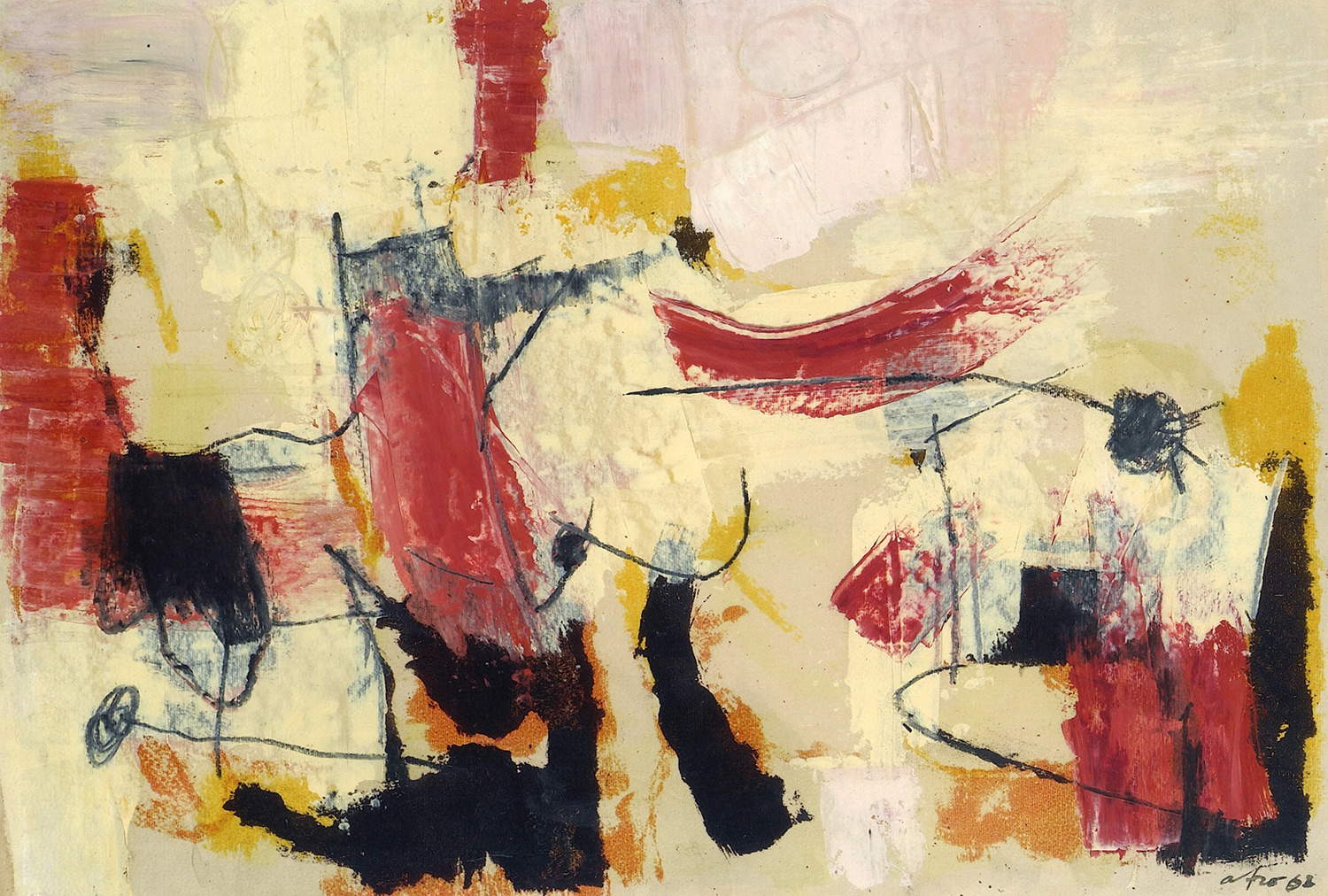
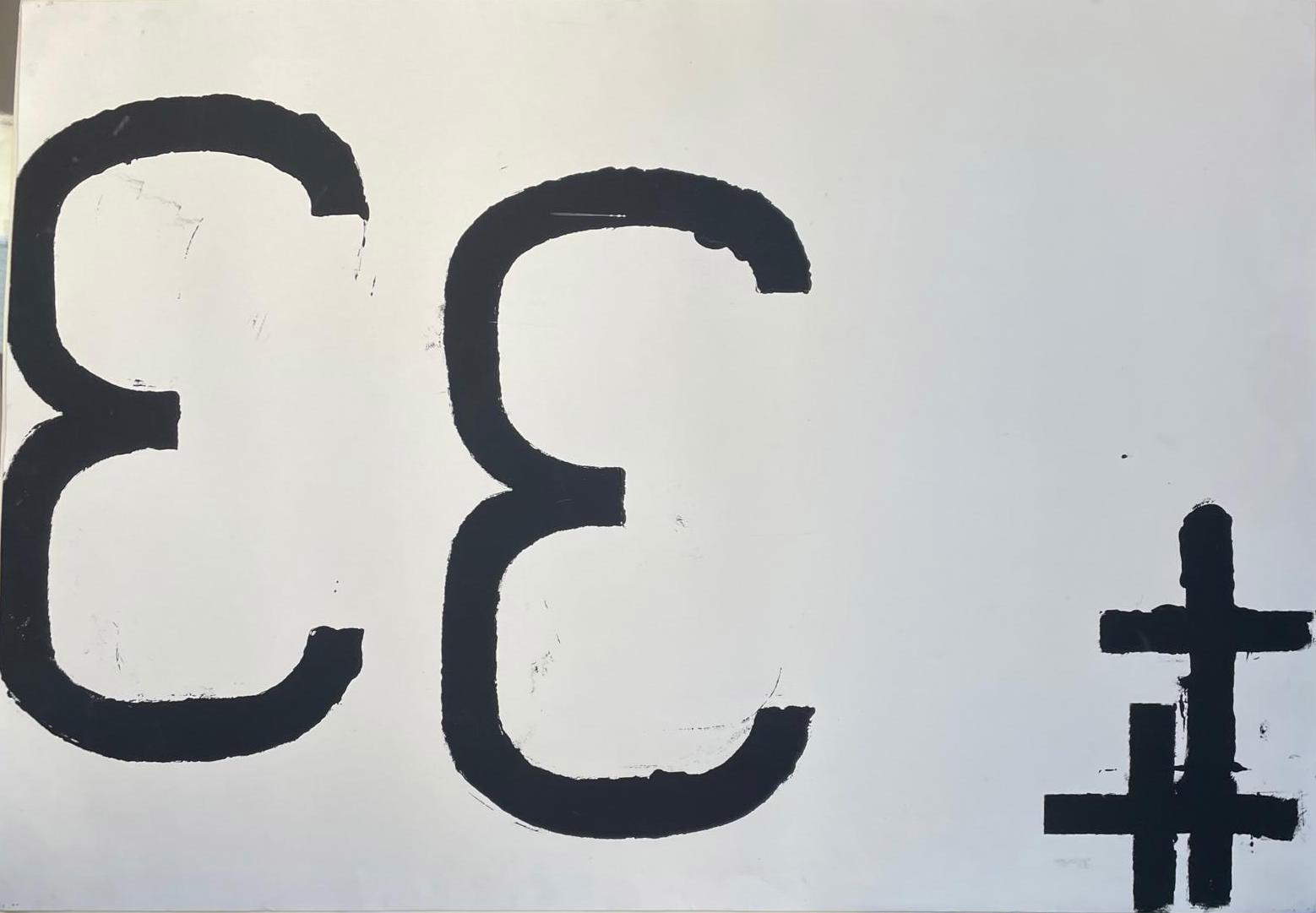
The following decade marks the beginning of a more radical phase, in which Rome becomes a focal point for new trends that will animate contemporary art. Two figures emerged strongly: Mario Schifano and Jannis Kounellis. By Schifano of the early 1960s is presented En plein air (1963), a work in which the artist mixes advertising suggestions and pictorial tradition. The images, although derived from mass communication, are recomposed in a pictorial gesture that is still personal and material, far from any reproductive mechanism. Kounellis’ research focuses instead on the theme of language and its codes. On display is one of his Alphabets, compositions in which numbers and dark mathematical signs are stamped on a white background.
Kounellis’s work, still far from the installations that would make him famous in later years, develops in parallel with that of Gastone Novelli, whose interest in language takes different forms. In Campo dei giochi (1965), a work destined to appear in the forthcoming retrospective that Ca’ Pesaro will devote to the artist, Novelli dissolves all syntactic order. Words float in the pictorial space, disengaged from any communicative function. There is no longer a hierarchy between figure and text, nor a defined spatial orientation. The canvas becomes a surface of free writing, a place where the sign takes on poetic value precisely because of its ambiguity. It is an “other” language, which eschews rational logic to open itself to new expressive possibilities.
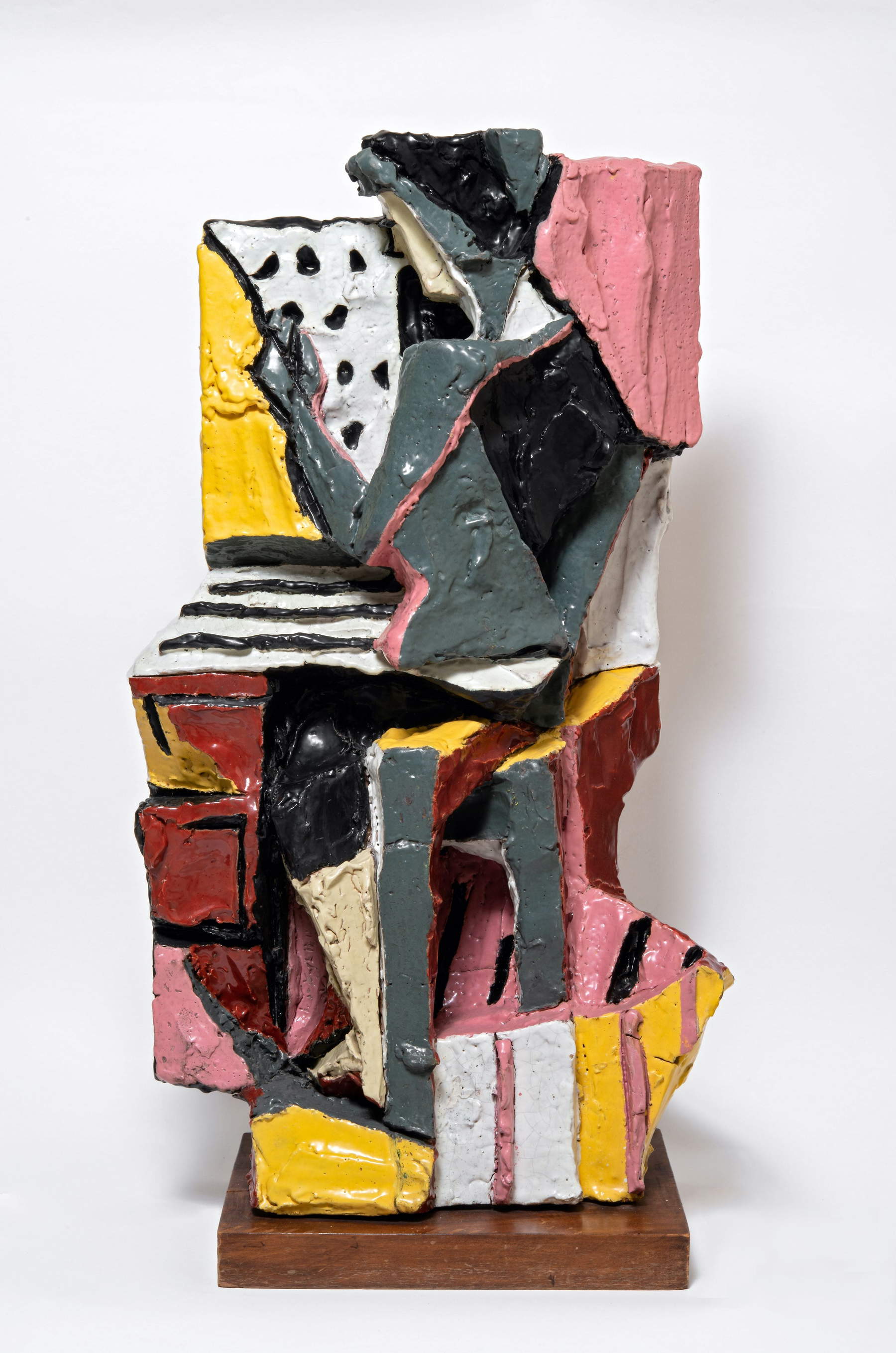
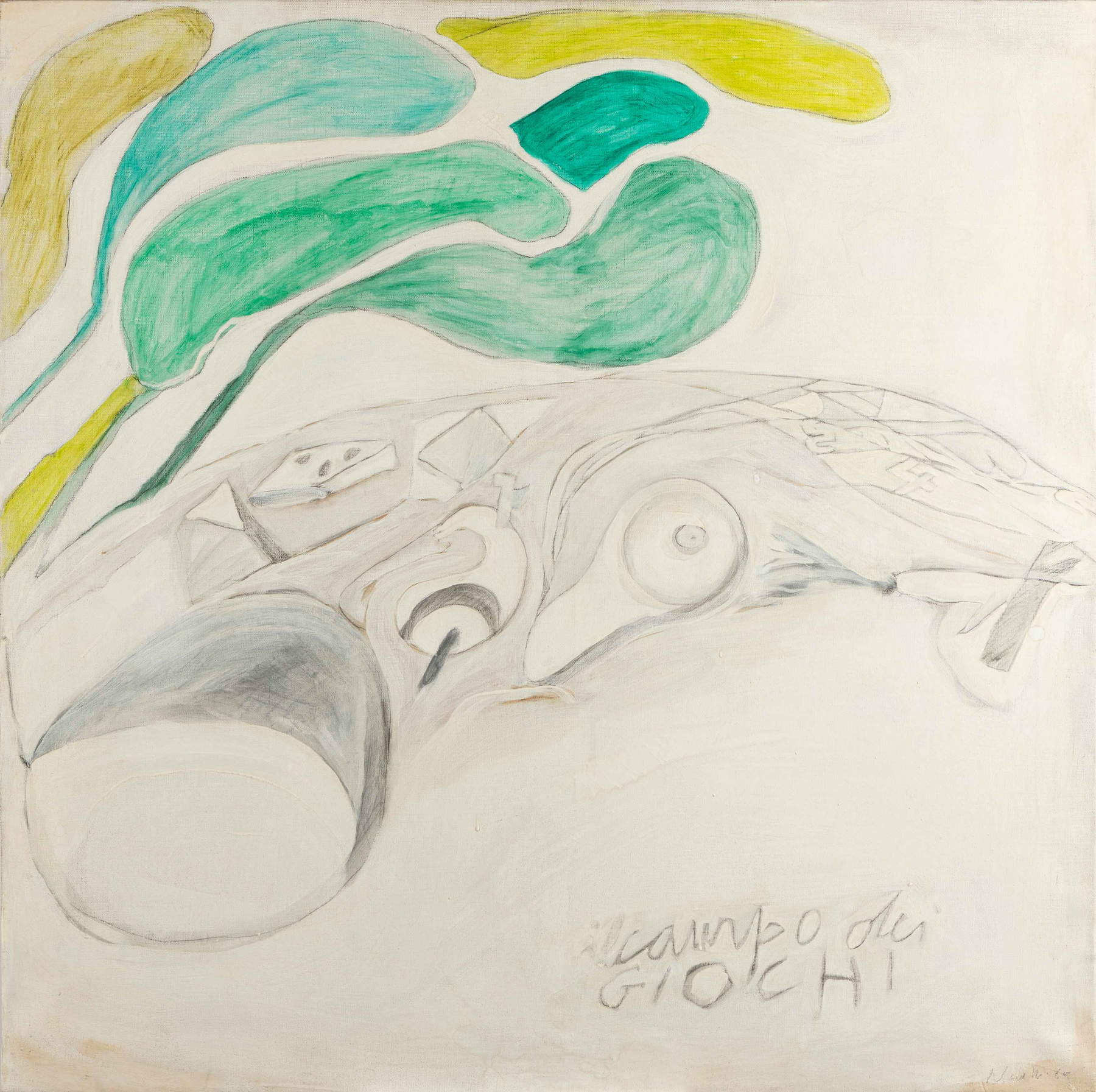
A section of the exhibition is devoted to two fundamental figures in postwar Italian art: Bice Lazzari and CarlaAccardi. Long marginalized by official historiography, today their works are the subject of increasing critical and collecting attention. Bice Lazzari developed a consistent and personal research on sign and rhythm, while Carla Accardi introduced innovative materials into her work, such as sicofoil, a plastic derivative produced by the Italian chemical industry in the 1960s. On display is one of Accardi’s works in sicofoil, evidence of her ability to blend technical experimentation and formal tension, opening up new horizons for painting.
The exhibition is articulated along an itinerary that highlights the main transformations of the Roman artistic language between 1950 and 1970, following the evolution from the geometric rigor of the post-World War II period to informal tensions, up to the irruption of a modernity increasingly aware of the conceptual potential of language. Rome, in that two decades, is configured as a privileged place of exchange between artists, gallery owners, critics and intellectuals. It is a city open to international influences, but also deeply rooted in its own tradition.
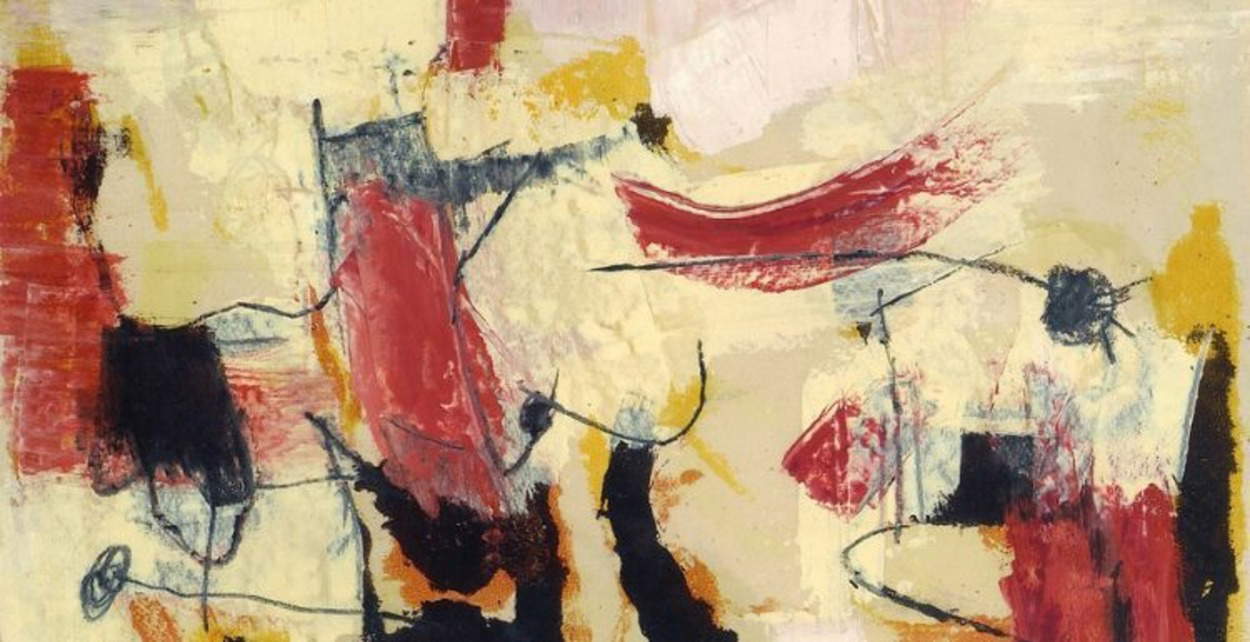 |
| Rome, twenty years of art between 1950 and 1970: a collaborative exhibition between two major galleries |
Warning: the translation into English of the original Italian article was created using automatic tools. We undertake to review all articles, but we do not guarantee the total absence of inaccuracies in the translation due to the program. You can find the original by clicking on the ITA button. If you find any mistake,please contact us.